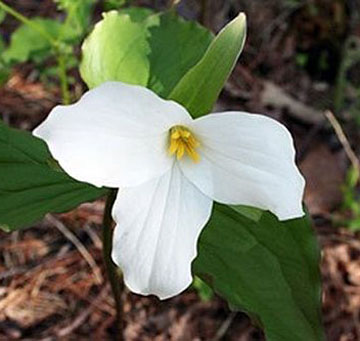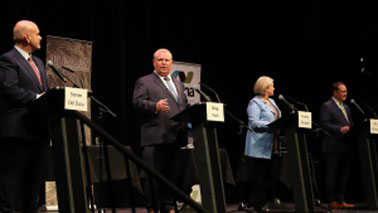ONTARIO ELECTION WATCH II : Is this just the calm before the storm or the calm before the disengaged electorate?
May 14th, 2022 | By Counterweights Editors | Category: In BriefONTARIO ELECTION WATCH 2022, CW EDITORS, GANATSEKWYAGON, ON. MAY 14, 2022 : Among many other things, Greg Barns’s excellent recent report on the May 21, 2022 Australian federal election may suggest something of a parallel fresh but relevant perspective on the June 2, 2022 provincial election in Canada’s most populous province.
To quickly review the current Ontario numbers, the two best-known opinion poll aggregating projects — Éric Grenier’s “Ontario Votes 2022 Poll Tracker” on the CBC News site, and Philippe J. Fournier’s “338Canada Ontario” associated with Maclean’s — are still predicting Ford Nation Ontario PC majority governments, with not too much less than 40% of the province-wide popular vote.
A bare majority in the current 124-member Legislative Assembly of Ontario is 63 seats. Grenier (“Last Updated: May 13, 2022 9:25 a.m.”) is projecting 72 seats for the PCs (or Ford Conservatives is almost certainly more apt) with 37.1% of the popular vote. Fournier (“Latest update: May 12, 2022”) gives the Ford Conservatives as many as 80 seats with 38% of the vote.
Both Grenier and Fournier are analyzing the same public polls using only mildly different assumptions. And it can be both reassuring and not surprising that they come to the broadly same average conclusions. Ever since the unofficial Ontario election campaign began sometime last fall, however, the recurrent Ford majority government average poll calculations have included a few individual polls suggesting a somewhat different story.
The best recent example is a Nanos survey for CTV News and cp24 taken May 7-8. It reported : “As of May 8th, 2022 the Progressive Conservatives have 35.4 per cent support, followed by the Liberals at 30.4 per cent, the NDP at 23.7 per cent, the Greens at 4.2 per cent, the New Blue Party at 3.6 per cent and the Ontario Party at 1.4 per cent.”
Nanos does not do more complex seat projections along with its individual polls. But a province-wide popular vote of only 35.4% is at the very least straying perilously close to a minority rather than majority government result. And the Ford Conservatives have recurrently strayed into this territory in individual polls — and even in some multiple poll averages — again since last fall.
All three main opposition leaders at Queen’s Park have now also made clear that they would not support a Doug Ford minority government. Which raises various intriguing prospects if that is what finally does happen on June 2 — against the wisdom of current multiple poll averages.
Meanwhile, the prevailing polling wisdom is still predicting a Ford Nation Ontario PC majority government on June 2 with not too much less than 40% of the province wide popular vote. And, as some admirably ardent democrats will want to stress, it remains true as well that this is not what the majority of Premier Ford’s Ontario people want, according to every poll extant.
Éric Grenier’s Poll Tracker, eg, divides the province into six regions : Eastern Ontario, Greater Toronto Area (ie that part of the far-flung Toronto metropolitan region at the northwest end of Lake Ontario that does not include the City of Toronto itself), Hamilton-Niagara (the southwest end of Lake Ontario), Northern Ontario, Southwest Ontario, and Toronto (or at least Mike Harris’s amalgamated City proper).
According to all the current polling — individual and aggregated averages — nothing remotely close to a majority of the people of Ontario who vote in any of these six regions will be voting for the Ford Conservatives. (Grenier’s regional ranking of “PC” support as of May 13, 2022 9:25 a.m. runs : Greater Toronto Area 42.0%, Southwest Ontario 39.5%, Eastern Ontario 39.3%, Northern Ontario 36.3%, Hamilton-Niagara 32.4%, Toronto 29.3%.)
And yet again according to all the current polling averages, the Ford Conservatives are most likely to form the next government with a comfortable enough majority of seats in the Legislative Assembly. Proponents of proportional representation will rightly enough argue that all this just points to the attractions of their proposed reform (already rejected once by Ontario voters).

More cynical students of political history may note that no Ontario government has been elected with a majority of the province-wide popular vote since 1937! (Real PC Premiers Leslie Frost and John Robarts came close in the 1950s and early 1960s but even then fell short.) Still others may explain that a new three or two-and-a-half (and now four) party system, which makes it difficult for any party to ever win a majority of the popular vote, was established when the CCF ancestors of today’s New Democrats became the official opposition in the 1943 election.
In any case what finally brings us back to Greg Barns on the May 21 Australian election is the limited and potentially somewhat chaotic prospect that the best chance the democratic majority of Ontario voters have at getting something a little more like what they want will be realized if the Ford Conservatives only “win” a probably unworkable minority government on June 2, 2022.
This is a twisted hope at best, on more than one level. And it makes us consider the possibility that Mr. Barns’s critique of the current Australian federal election campaign has some relevance for the current Ontario provincial election campaign in Canada, especially when he notes :
“The level of voter disengagement is high … One possible outcome for this election is a hung parliament [in Canada minority government], with teal independents and current minor party and independent MPs holding the balance of power. This has been considered a real prospect but appears less likely given the present state of the polls … What many Australians hope for is an end to this election campaign …”






